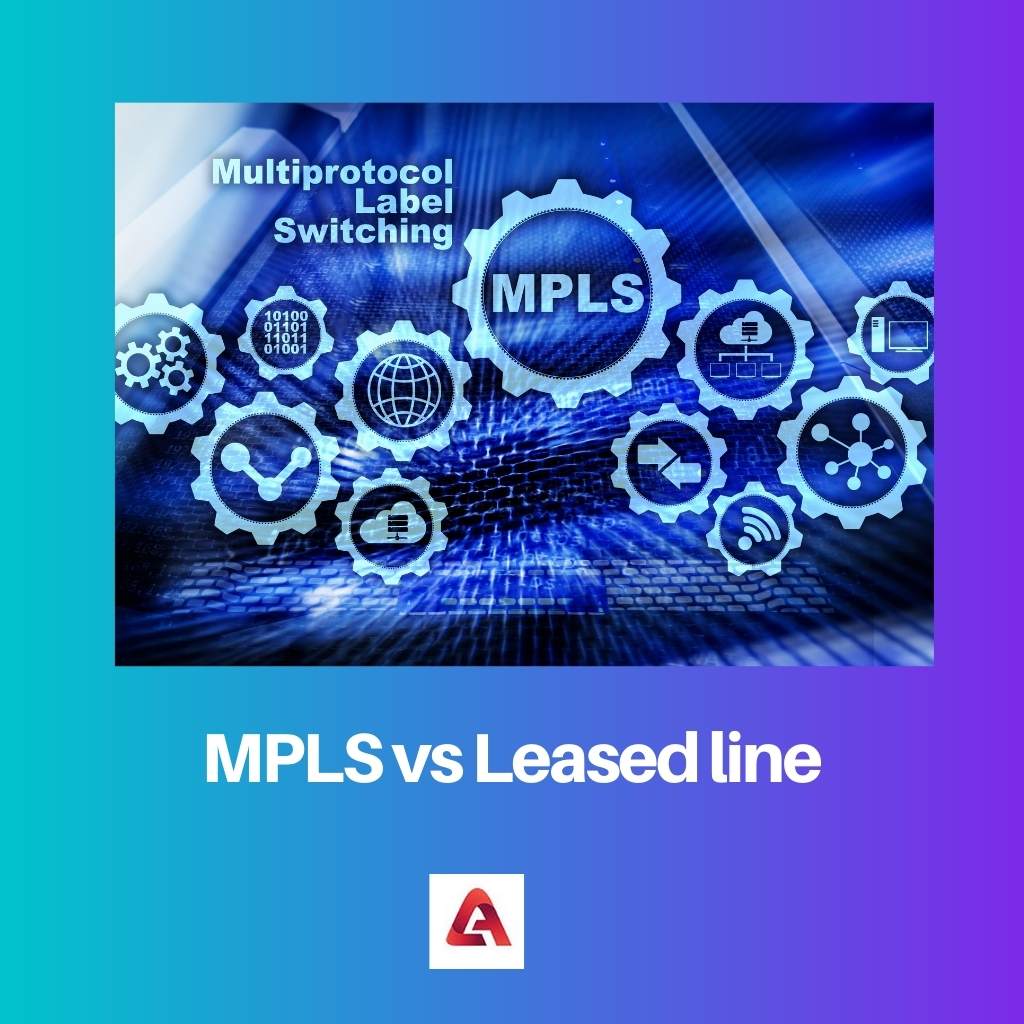Both MPLS and leased lines are related to WAN (Wide Area Networking).
These are the connections that are used to transport data across a wide range of populations, but there are differences between their working principles which make them different and let people choose among them. So here are a few differences between them.
Key Takeaways
- MPLS is a packet-switching technology that uses labels to direct data through a network, while leased lines provide a dedicated point-to-point connection between two locations.
- MPLS is more flexible than leased lines and can handle a wider range of traffic types, including voice, video, and data.
- Leased lines provide guaranteed bandwidth and are more reliable than MPLS but can be expensive and less flexible.
MPLS vs Leased line
A multipoint type of connectivity is called MPLS (Multi-Protocol Label Switching). In this type of network, data is transferred in the form of packets among the nodes. Each node has a label. It provides a highly secure connection. A private connection that is only shared with a single customer is called a leased line. It is a secured network.

MPLS (Multi-Protocol Label Switching) is a type of wide-area network which is distributed in a full mesh system.
It has data packets that are transported from one node to the other and are assigned labels at each node to make the router be known with the route till it reaches the destination.
A leased line is also called a private network. This is so-called because the connection is between the provider and the user. The data is transferred from point to point.
It is much more secure as it has physical separation between every connection. It is distributed among each customer and not shared among different users.
Comparison Table
| Parameters of Comparison | MPLS | Leased Line |
|---|---|---|
| Type of connectivity | Multipoint or point-point | Point-point |
| Security | High level due to logical separation | Most secured due to physical separation. |
| Setup skill required | High skill resource required for setup | Moderate to less skill is required for setup. |
| Distribution among customers | Shared across multiple customers | Individual customers |
| Performance | An improved performance especially spoke to spoke. | Low performance in spoke-to-spoke communication. |
What is MPLS?
MPLS (Multi-Protocol Label Switching) is a type of wide-area network which is distributed in a full mesh system.
It has data packets that are transported from one node to the other and are assigned labels at each node to make the router be known with the route till it reaches the destination.
This new technology and modern form of the wide-area network are replacing the old forms. It is highly secure due to the logical separation of the connectivity.
This type of WAN is scalable and protocol-independent. It is distributed as packets of data to the customers, which are then accepted by the routers respectively.
This Multi-Protocol Label Switching needs highly skilled engineers to set up the mesh connection. This is a highly updated system of data distribution. MSPL can summarize other network protocols; hence its name has the word “multiprotocol” in it.
Its connection mesh depends on the Label switch router, Label edge router, Provider router, Label distribution protocol, and Labeled switched paths. These are some of the most important points for data distribution.
What is Leased Line?
A leased line is also called a private network. This is so-called because the connection is between the provider and the user. The data is transferred from point to point.
It is much more secure as it has physical separation between every connection. It is distributed among each customer and not shared among different users.
A leased line is mostly used by businesses to connect distant offices.
The leased line is always active. It can carry voice, data, or both of them from one place to the other. In these connections, the rent is paid on a monthly basis to the provider. It is highly secured due to the physical separation feature.
A leased line can be used as telephone connections, data, or internet connections. This connection is very easy to set up as it is not so modern technology as compared to MPSL.
It does not need highly skilled engineers for the setup. This is a point-to-point connection, meaning that the connection is only between the provider and the user.
It is distributed separately to individual customers. This type of wide-area network is highly secure due to its physical separation feature. This, though, has low performance in the spoke-to-spoke feature.
This connection is a contract between the provider and the user that the connection is always active and paid to the provider for the service on a monthly basis.
Main Differences Between MPLS and Leased Line
- MPLS has multipoint or point-to-point connectivity, whereas the leased line has only point-to-point connectivity.
- Multi-Protocol Label Switching is highly secured due to the logical separation between the connections. On the other hand, the leased line is also much more secure due to the physical separation among the connections.
- MPLS is a very technologically improved system and needs a highly skilled person to set up the connection, but leased line, on the other hand, are easier to set up and does not need highly skilled engineers to set the connections.
- MPLS is distributed to the customers in a full mesh way, like the users share the connections. On the other hand, the leased line is only serviced to a single user. It is provided from the provider to the user only. So it is also known as the private connection.
- Multi-Protocol Label Switching (MPLS) has a high performance, special in spoke-to-spoke, but the leased line has low performance in this field of spoke-to-spoke.



